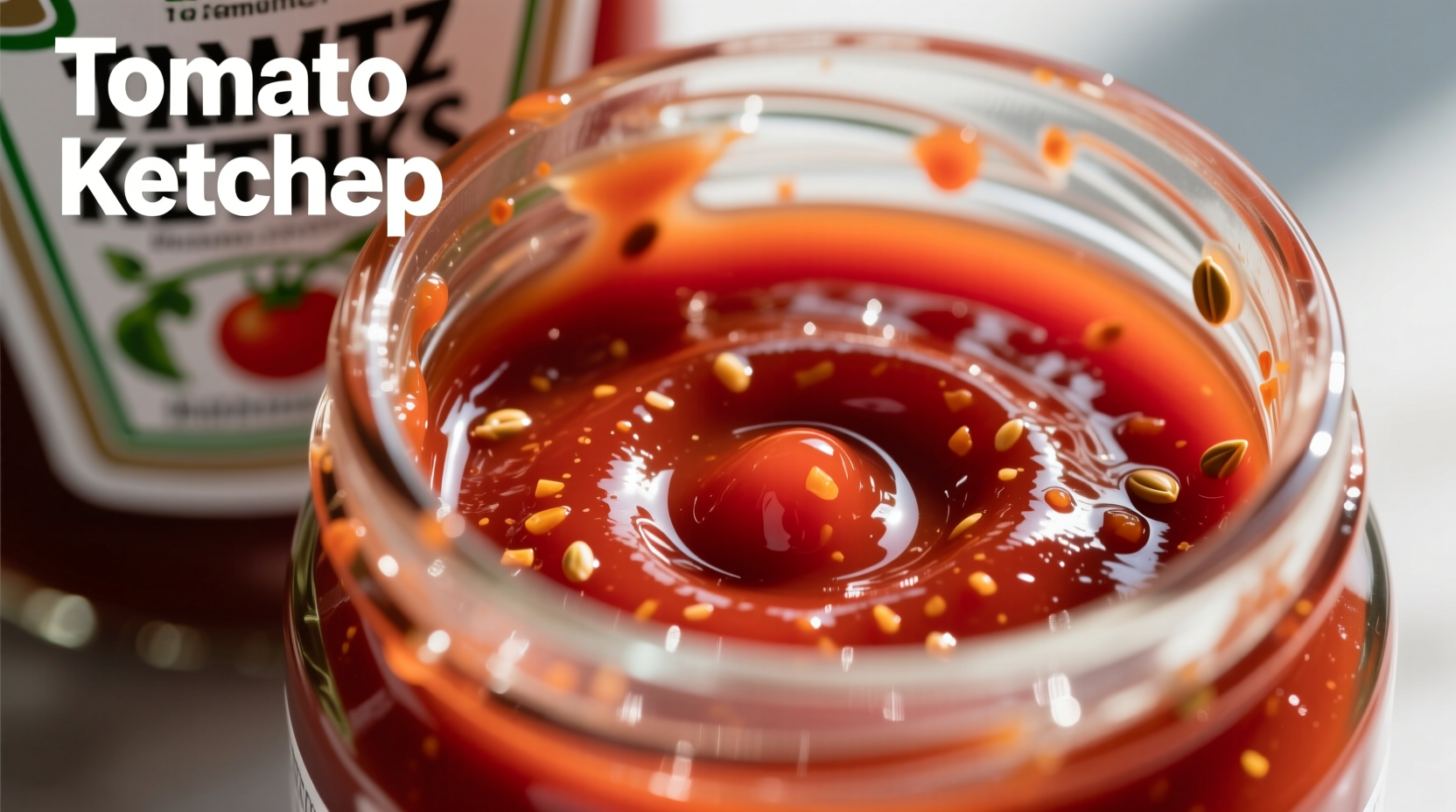Ever wondered what's really inside that familiar red bottle on your restaurant table? Understanding the exact composition of tomato ketchup isn't just curiosity—it affects your cooking results, dietary choices, and even food safety. This comprehensive breakdown reveals not just what's in ketchup, but why each ingredient matters and how formulations have evolved to meet modern standards.
The Core Ingredients: What Makes Ketchup, Ketchup
While recipes vary by brand and region, all tomato ketchup shares these essential components that create its signature sweet-tangy flavor and smooth texture. Let's examine each element's purpose and typical concentration:
Tomato Concentrate: The Foundation (20-30%)
The heart of ketchup is tomato concentrate, made by cooking down tomatoes to remove water content. Unlike fresh tomatoes, concentrate provides consistent color, flavor, and thickness. The FDA requires that commercial ketchup contain at least 7.5% tomato solids by weight, but premium brands often exceed 25%. This concentrated tomato base delivers lycopene, the antioxidant responsible for ketchup's vibrant red color and potential health benefits.
Vinegar: The Tangy Balance (7-12%)
Distilled white vinegar (5% acetic acid) provides ketchup's characteristic tang while serving as a natural preservative. The acidity level (typically pH 3.5-3.9) prevents bacterial growth and enhances flavor perception. Historical recipes used wine or malt vinegar, but modern production standardized on distilled vinegar for consistent flavor and longer shelf life.
| Ingredient | Typical Percentage | Primary Function |
|---|---|---|
| Tomato concentrate | 20-30% | Provides base flavor, color, and body |
| Vinegar | 7-12% | Acidity, preservation, flavor balance |
| Sweeteners | 10-15% | Counteracts acidity, enhances mouthfeel |
| Salt | 2-3% | Flavor enhancement, preservation |
| Spice blend | 0.5-1.5% | Complex flavor development |
| Thickeners/preservatives | 0.1-0.5% | Texture stability, shelf life extension |
Sweeteners: The Flavor Counterbalance (10-15%)
Modern ketchup relies on high fructose corn syrup (HFCS) or sucrose (table sugar) to balance the tomato's natural acidity. The sweetener content directly impacts perceived flavor intensity—too little creates an unpleasantly sharp product, while too much overwhelms the tomato flavor. According to USDA FoodData Central, a standard tablespoon (17g) of ketchup contains approximately 4 grams of sugar, contributing to its 15-20 calories per serving.
Salt: The Flavor Amplifier (2-3%)
Sodium chloride enhances all other flavors while serving as a preservative. The FDA's National Health and Nutrition Examination Survey shows that ketchup contributes about 2% of average Americans' daily sodium intake. Reduced-sodium versions typically replace some salt with potassium chloride, though this can create a slightly metallic aftertaste.
Spice Blend: The Secret Weapon (0.5-1.5%)
The distinctive flavor profile comes from a carefully balanced spice mixture. While exact formulations are proprietary, most commercial ketchups contain:
- Onion powder (0.2-0.4%)
- Garlic powder (0.1-0.3%)
- Celery seed (0.05-0.15%)
- Allspice (0.02-0.08%)
- White pepper (0.01-0.05%)
These spices undergo rigorous quality control testing as outlined in the FDA's Food Labeling Guide to ensure consistent flavor batch after batch.
How Ketchup Formulation Has Evolved: A Historical Timeline
Understanding modern ketchup requires examining how ingredient standards developed over time. This timeline reveals key regulatory and consumer-driven changes:
- 1876: H.J. Heinz introduces the first standardized ketchup formula using distilled vinegar instead of wine vinegar, creating a more consistent product
- 1930s: FDA establishes minimum standards for "tomato ketchup" requiring at least 7.5% tomato solids and prohibiting artificial coloring
- 1970s: High fructose corn syrup replaces sucrose as the primary sweetener due to corn subsidies and sugar tariffs
- 1990s: Xanthan gum introduced as a stabilizer to prevent separation during shipping and storage
- 2006: FDA updates labeling requirements to specify "high fructose corn syrup" instead of generic "sweeteners"
- 2010s: "Natural" and "organic" ketchup variants emerge with alternative sweeteners like cane sugar and honey

Brand Comparison: What's Different in Your Bottle?
While basic ingredients remain consistent, brand variations affect taste, texture, and nutritional profile. The USDA's Economic Research Service tracks these differences in their Food Price Outlook reports:
Conventional Brands
Major brands like Heinz, Hunts, and Del Monte follow similar formulations with minor variations. Heinz uses a slightly higher tomato concentration (26% vs industry average of 22%) and includes onion and garlic powder in their spice blend, while Hunts emphasizes "no high fructose corn syrup" in their classic formulation.
"Natural" and Organic Variants
Brands like Annie's and 365 Whole Foods Market replace HFCS with cane sugar or honey, reducing the glycemic impact but often increasing cost. These versions typically contain 15-20% more tomato concentrate but may lack the shelf stability of conventional products.
Practical Guidance: Reading Labels Like a Pro
When selecting ketchup, focus on these key indicators of quality and suitability for your needs:
For Cooking Applications
Choose products with higher tomato concentrate (look for "tomato paste" as first ingredient) and minimal added sweeteners when using ketchup as a base for sauces. The thicker consistency provides better flavor integration in dishes like meatloaf or barbecue sauce.
For Dietary Considerations
Check the sugar content per serving—some "reduced sugar" versions use artificial sweeteners that can create off-flavors when heated. If sodium is a concern, look for "no salt added" varieties, though these often require additional seasoning in recipes.
For Authentic Flavor
Traditional European-style ketchups often use wine vinegar instead of distilled vinegar and contain higher spice concentrations. These provide more complex flavor profiles suitable for gourmet applications but have shorter shelf lives due to less aggressive preservation.
Common Questions About Ketchup Ingredients
Based on frequent consumer inquiries tracked through the International Food Information Council's resource center, here are answers to the most pressing questions:











 浙公网安备
33010002000092号
浙公网安备
33010002000092号 浙B2-20120091-4
浙B2-20120091-4